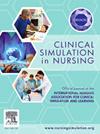开发支持仿真设计的提示模板:最大化生成人工智能的潜力
IF 2.5
3区 医学
Q1 NURSING
引用次数: 0
摘要
像ChatGPT这样的生成式人工智能工具正在迅速改变学术界和医疗保健行业,特别是在护理教育领域,它们能够帮助创建临床模拟场景。有效使用这些工具的关键在于快速设计,即精心制作输入以指导AI输出。护士教育工作者发起的AimAn倡议探索了快速工程如何与已建立的模拟标准保持一致,从而简化场景设计。研究结果揭示了不同人工智能平台(ChatGPT、CoPilot、Claude)在输出质量和重点上的差异,强调了谨慎选择和人工监督的必要性,以确保人工智能生成的模拟内容的准确性和相关性。这种快速改进的迭代过程为创造更有吸引力和更有效的学习体验带来了巨大的希望,但人工智能作为一种工具,可以增强而不是取代护理模拟专家的专业知识。本文章由计算机程序翻译,如有差异,请以英文原文为准。
Development of a prompt template to support simulation design: Maximizing the potential of generative artificial intelligence
Background
Generative AI tools like ChatGPT are rapidly changing academia and healthcare, particularly in nursing education through their ability to assist in creating clinical simulation scenarios. The key to effectively using these tools lies in prompt engineering, the careful crafting of inputs to guide AI outputs.
Aim
An initiative by nurse educators explored how prompt engineering, aligned with established simulation standards, could streamline scenario design.
Findings
The findings revealed variations in output quality and focus among different AI platforms (ChatGPT, CoPilot, Claude), highlighting the need for careful selection and human oversight to ensure accuracy and relevance in AI-generated simulation content.
Conclusions
This iterative process of prompt refinement holds significant promise for creating more engaging and effective learning experiences, but AI serves as a tool that augments, not replaces, the expertise of nursing simulationists.
求助全文
通过发布文献求助,成功后即可免费获取论文全文。
去求助
来源期刊

Clinical Simulation in Nursing
NURSING-
CiteScore
5.50
自引率
15.40%
发文量
107
期刊介绍:
Clinical Simulation in Nursing is an international, peer reviewed journal published online monthly. Clinical Simulation in Nursing is the official journal of the International Nursing Association for Clinical Simulation & Learning (INACSL) and reflects its mission to advance the science of healthcare simulation.
We will review and accept articles from other health provider disciplines, if they are determined to be of interest to our readership. The journal accepts manuscripts meeting one or more of the following criteria:
Research articles and literature reviews (e.g. systematic, scoping, umbrella, integrative, etc.) about simulation
Innovative teaching/learning strategies using simulation
Articles updating guidelines, regulations, and legislative policies that impact simulation
Leadership for simulation
Simulation operations
Clinical and academic uses of simulation.
 求助内容:
求助内容: 应助结果提醒方式:
应助结果提醒方式:


